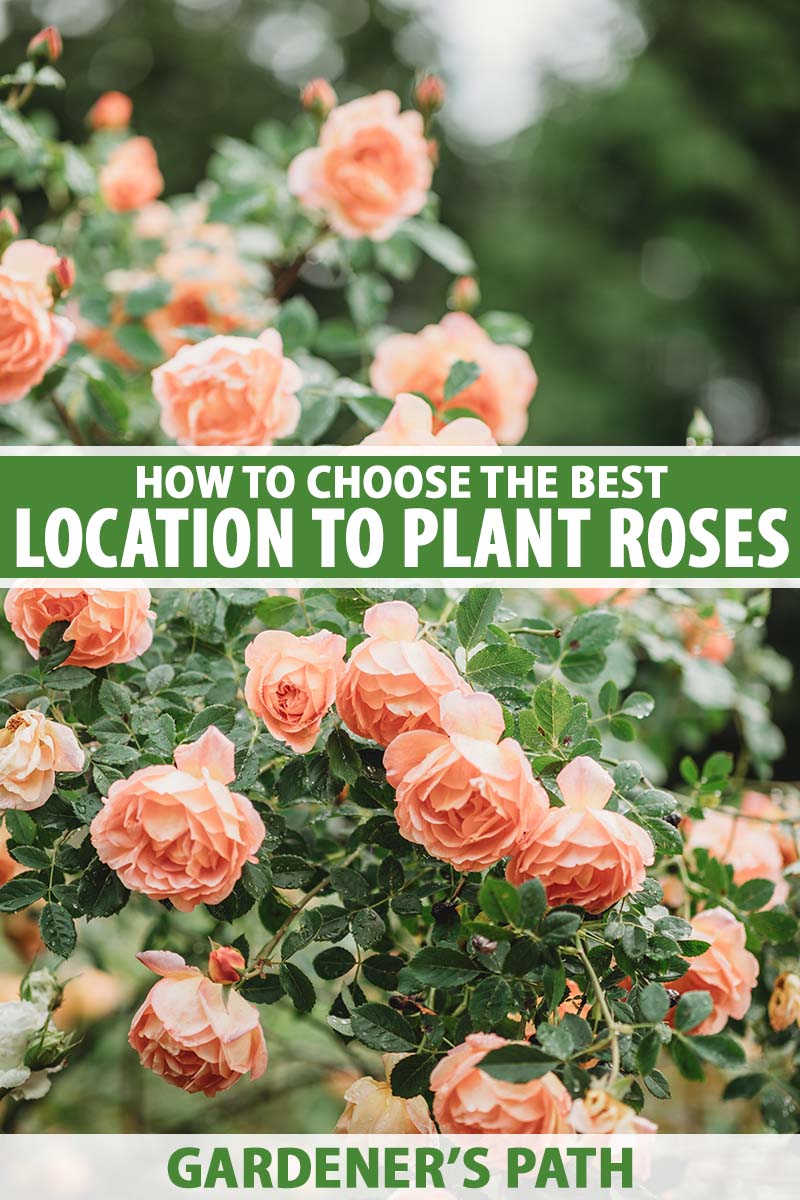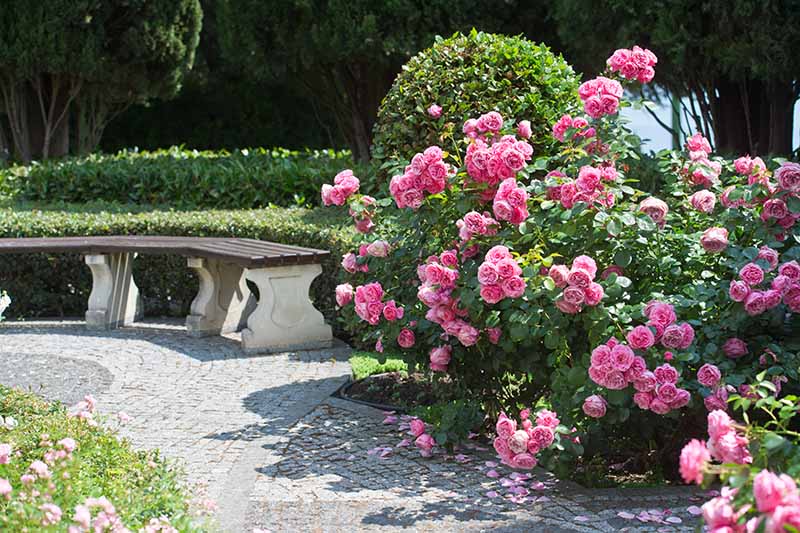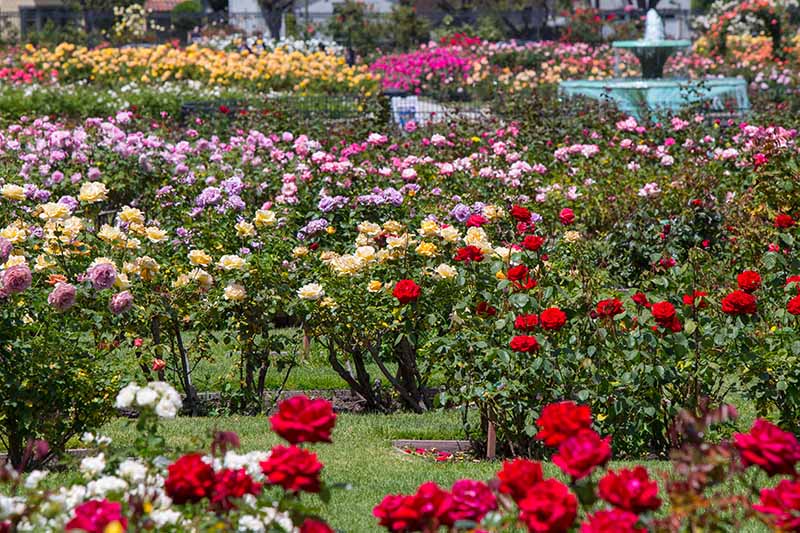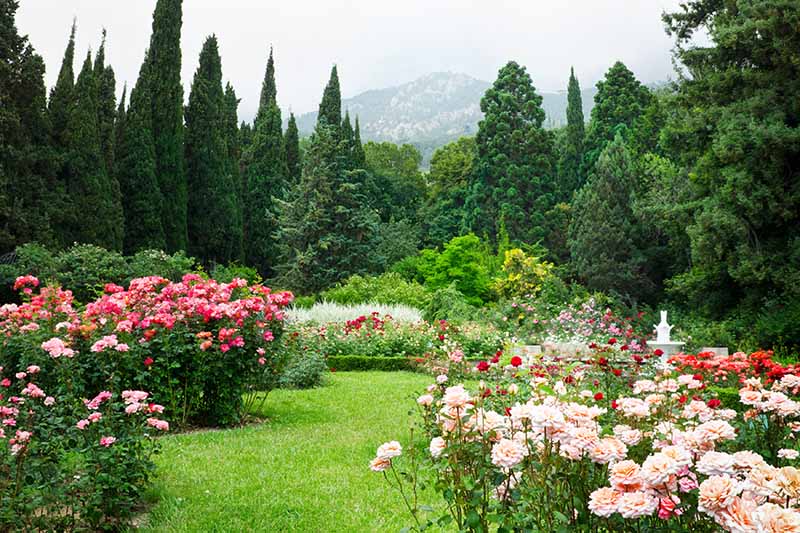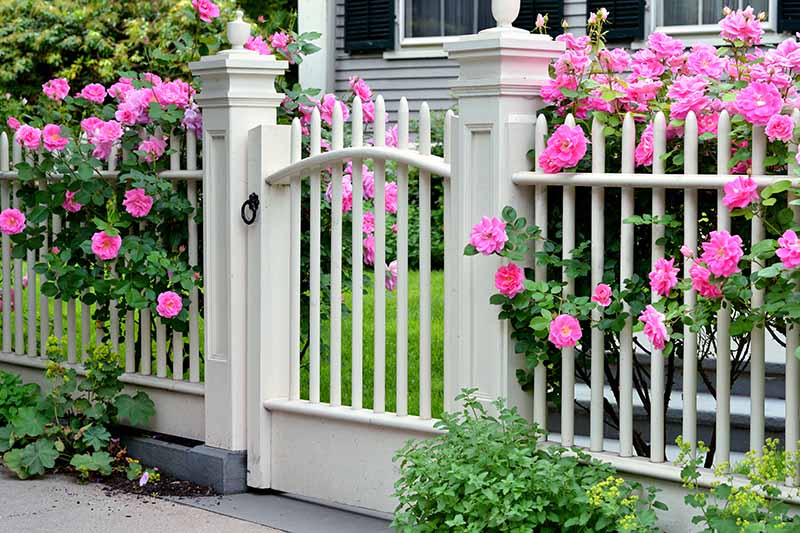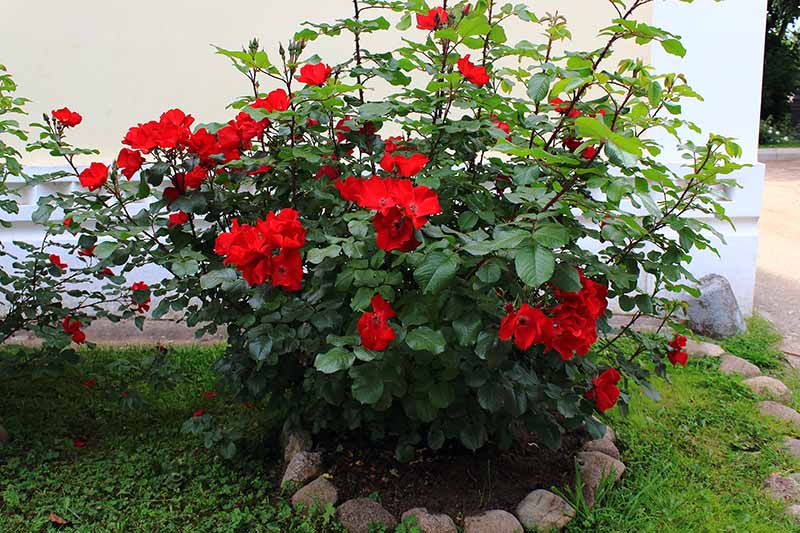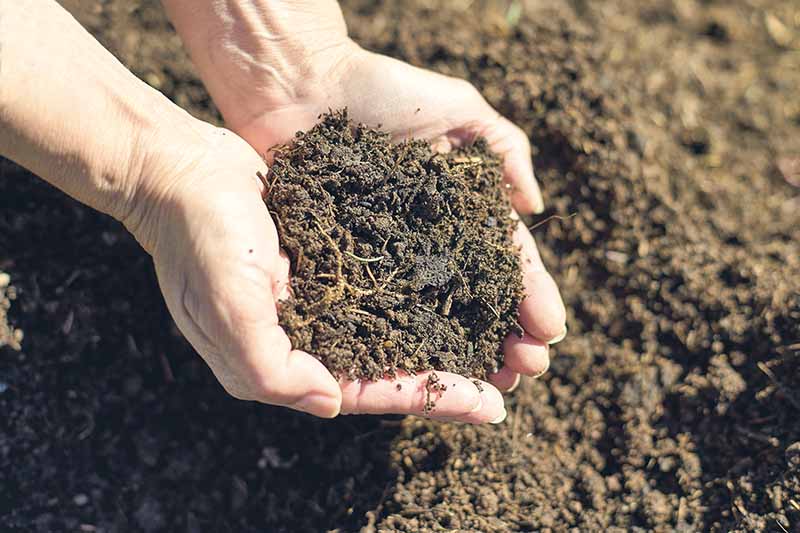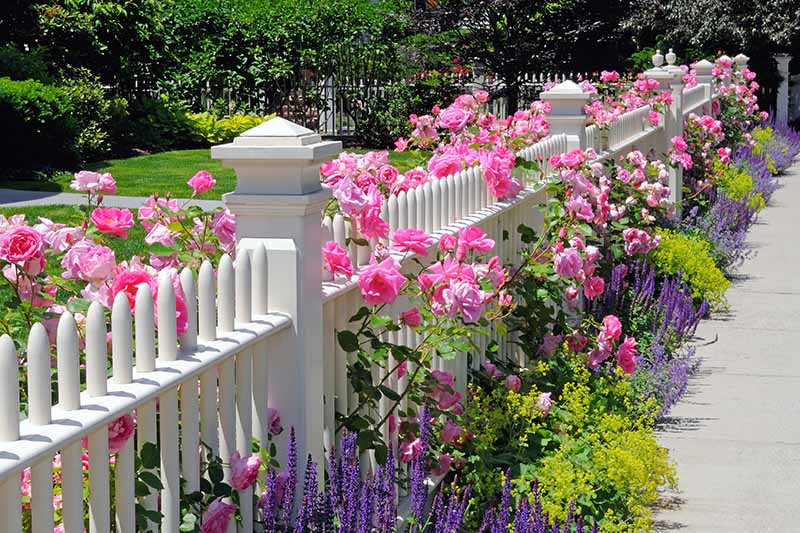As is the case with choosing a house, of all the decisions you make when deciding to add a rose to your garden, perhaps the most important is placement. And when gardeners complain that roses are too fussy, it’s often just because they’ve put them in the wrong place. Hey, you’d be miserable, too, if someone plopped you somewhere that you didn’t like and wished you luck. We link to vendors to help you find relevant products. If you buy from one of our links, we may earn a commission. If you really want disease-free plants with big, prolific blossoms (and of course you do!), you need to find the perfect spot in your yard. Now that I’ve driven the point home, let me explain exactly what I mean by the right location. Here’s what we’ll go over in the coming guide: There are a few basic elements that you need to keep in mind. Let’s check them out.
Sun Exposure
Sun exposure is important. If your bush needs full sun, then you must pick a location with full sun. That means more than six hours of direct sunlight each day. Some roses can get by with partial sun, which is defined as somewhere between three and six hours of exposure per day. Be sure to do your research so you will know what yours needs. Don’t be tempted to try and make do with slightly less sun than your selected variety requires. If you do, you can bet the farm that you’ll encounter fungal diseases or unimpressive flowering in the future, if not both. But it’s not just a matter of picking a spot that receives the right number of hours of sun per day. The timing of that sun exposure matters, too. Some diseases, like powdery mildew, settle into plants that have moisture on the foliage in the morning. To counter this, choose a location that will receive direct morning sun to dry off the dew.
Spacing
Picture the great rose gardens of the world. Almost all of them are in places that are wide open, without a ton of shade or crowding from other bushes, trees, or buildings. The ground is usually flat or slightly sloped, and they aren’t crowded, so the plants have ample air circulation around them. In other words, given the ideal location, they have plenty of space. In Portland, Oregon, the International Rose Test Garden is on a slope facing east (remember my tip about early morning sunlight?) with none of the region’s ever-present Douglas fir trees blocking the light or reducing airflow. Each plant has a good amount of space around it – they generally aren’t crowded by other roses or nearby plants of other varieties. That’s the kind of situation we’re talking about. You probably don’t have a huge, sloping field with eastern exposure available for your roses, but you can do your best to give them the right conditions nonetheless. That means planting away from trees and large bushes, as well as giving them room between any buildings or other structures like fences. For shrub roses (referring to their growth habit in this case, not the category of plants), I prefer to plant diagonally or randomly rather than in organized lines, to give them plenty of space on all sides without taking up a ton of room. That’s not to say that you should entirely avoid growing a climbing variety against your wall, or a ground cover bunched up against some other bushes. Just make sure you pick a type that can handle that kind of environment. It’s also fine to position them in groupings with other plants. Just pick other types of plants with a shorter stature, and be sure to choose varieties that won’t crowd them out. You should also remember that your selected Rosa, fresh from the nursery, will eventually become much larger than it is when you plant it. You might be thinking that you’ll keep a bush that grows eight feet wide a bit smaller through pruning, so that it can fit in a seven-foot spot. Don’t do it. Roses never do as well if you try to force them to stay smaller than they naturally want to grow. Usually, flowering is the first thing to be compromised in this situation. Eventually, you’ll find yourself either disappointed in your plant’s poor performance, or you’ll be frustrated by how often it seems to reach out and snag you by the shirt. Read plant tags and do the research to understand how big your selected variety will eventually grow, and space it accordingly.
Protection
While you want them to have plenty of space and sun exposure, you don’t want your plants to be hit by lots of harsh wind either. Strong winds can cause them to shift back and forth, which loosens the stem in the soil and can weaken the plant. Winter wind can also damage the tips of the canes, which may reduce flowering in the following season. Wind also causes plants to dry out more quickly, which means you’ll need to water them more often to keep them happy. So while you don’t want them to be blocked by nearby structures or plants, a little protection from the wind is ideal. That means planting somewhere where trees will block the wind, but not so close that they will shade or crowd them. Or you could plant near your home or a wall, so long as they aren’t placed so close that there isn’t good air circulation and sun exposure available.
Soil
At the most fundamental level, Rosa species need loamy, fertile, well-draining soil. That means not too much clay, and not too much sand. The soil should have a pH between 6.0 and 6.5. Not many people have this type of soil available naturally, and if you do, when can I move in? But seriously, the rest of us have to create it by amending what we have. If your soil isn’t too far off, you can work in some well-rotted compost to improve the situation. Compost improves both sandy and clay soils. If you decide to amend your soil, my top tip is to dig as large a hole as possible. You really can’t overdo it. Then, mix your native soil and the compost together so that it feels loose and loamy, and refill the hole. Otherwise, raised beds filled with purchased soil are an excellent option. That way, you can create the exact type of soil that your plants need. While we’re talking about soil, if you’ve already grown something in the Rosa genus in a given spot within the past few years, don’t plant another there. Crop rotation is always an excellent idea for vegetable gardens, but it applies here, too. More often than not, they started taking off in their new location. But you don’t have to go through the same growing pains. Hopefully, this guide made you feel confident in finding exactly the right spot to make your roses thrive. If so, we’d love it if you’d come back and share photos of your no-doubt jubilant roses. And feel free to reach out with any questions as well. Once you put your plant in the ground, next comes the challenge of caring for your rose bush. We have some excellent guides to help you with that:
Growing Roses 101: Getting StartedHow to Winterize Roses5 Tips For Pruning Roses Like a ProHow to Identify and Treat Common Rose Diseases
